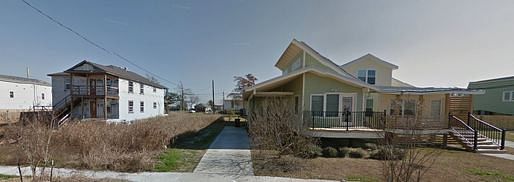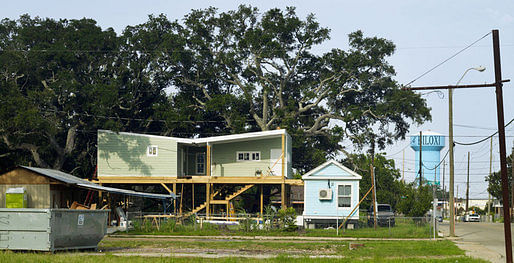
Jul '14 - Sep '14
If you have any sense of responsibility at all, stay with your riots here at home. Work for the coming elections: You will know what you are doing, why you are doing it, and how to communicate with those to whom you speak. And you will know when you fail. If you insist on working with the poor, if this is your vocation, then at least work among the poor who can tell you to go to hell. It is incredibly unfair for you to impose yourselves on a village where you are so linguistically deaf and dumb that you don't even understand what you are doing, or what people think of you. And it is profoundly damaging to yourselves when you define something that you want to do as "good," a "sacrifice" and "help." -- Monsignor Ivan Illich to the Conference on InterAmerican Student Projects (CIASP) in Cuernavaca, Mexico, on April 20, 1968.

The above quote from Ivan Illich is part of a larger critique of those who would 'do good' in communities that are not their own. The image above was recently posted as a Groupon offering to attend the Make It Right Gala event (individual tickets went for $1,000, tables for $25,000).
When Illich lambasted the CIASP, he could have been poking a finger in the eye of all 'humanitarian designers', those who choose to provide their design skills as charity service. Architects are not immune to the human desire to find our place in the world, and in a career field where our work may sometimes be perceived as less than fulfilling, it makes sense then that many aspiring designers flirt with finding ways of doing what we consider to be 'meaningful work', both before and during gainful employment.
To be clear about the association above, however, I do not want to leave the impression that the work of Brad Pitt and his Make It Right Foundation is unnecessary or tone-deaf within the community it is most famously located within, the Lower 9th Ward. I know it's passé to bash celebrity-architects, and I don't personally know enough to speak on behalf of all residents and neighbors who either live in or near a Make It Right House, but I do know a few of the hard working designers who spent their time and energy - working for the local architect of record - to make these homes a reality. I know that they live in and around this community, they support it in ways other than just design, and they do this work because it provides an income as well as some measure of fulfillment.

In conversation with residents of the community, there's no one single consensus as to how these homes should be viewed. Some residents appreciated the place-making characteristics. Others wished that Make It Right had looked more holistically at their entire neighborhood, including those who were able to return to their homes but not completely recover from the damage the storm caused. There's a deep history that provides context to why and how this partnership came about, but in speaking with one resident, he expressed his personal concern at the overall viability, and whether or not the local vernacular could blend with the modern structures well enough for the community to successfully take ownership in the generations to come.
For the most part, they all had something between confusion and disdain for the 'eco-tourism' that the Make It Right homes have created; at least two BMWs packed with affluent gawkers snapping cell phone pictures drove past me within the span of an hour. At the same time, local businesses that dispensed snowballs on the go were easy to spot, so certainly not all in the area resented the increased tourism to the neighborhood. Most interesting to me were the handful of homes that were built by local homebuilders looking to capitalize on their proximity to this newly designed community. A few of their overgrown lots next to well manicured lawns indicated that many of these were left unfinished. Universally, however, no one I spoke with took time to single out a specific house, or a specific architect.

By and large, Make It Right has had not just good intentions, but also a well funded professional operation, an important ingredient in their capacity to deliver a built project. They also now have experience working not just in New Orleans, but also Kansas City and now Fort Peck, an Indian Reservation project that has incorporated participatory planning workshops into the process of design. Most importantly, however, is they don't go it alone: they are either partnering with - or invited by - organizations and businesses that have already demonstrated a desire for design to address a community need, and are actively seeking the tools and skills that Make It Right can provide. It's telling that an organization founded to provide affordable home ownership within one small community in the aftermath of a disaster has found multiple outlets for their skills to be applied around the country.

It is an important distinction (good intentions vs. good intent + design skills + demonstrated performance), and one that was brought up by Emily Pilloton in her rebuttal to Bruce Nussbaum's critique comparing humanitarian design efforts to imperialism. Both present interesting opinions on the issue, but the takeaway is that design that serves the greater good around the world could perhaps see its energy refocused in areas closer to home, in communities that have need, and in ways that aren't leaving behind a mess for the community to clean up after the designers pack up and head back home. Pilloton's response is especially poignant, in that she indicates the work of Project H has, in fact, evolved to meet local communities where they are, with a mission that moves beyond design:
It is only through this local engagement and shared investment that the humanitarian design process shines. It is through this personal connection to place and people that the human qualities of design rise to the top of the priority list, through which our clients are no longer beneficiaries, but experts and co-designers right there with us... It isn't about design anymore, it's about an educational process that produces creative capital where it did not exist before.

Her comments are reflected again in the work of Maurice Cox at Bayview, where a community rallied together to provide themselves with the tools of development that normally are not readily accessible to communities. It takes a special kind of architect who, rather than asking the community what they can afford to build, offering their service free of charge, or flat out subsidizing the cost, instead takes the time to share knowledge in an accessible format, thereby lowering the barriers between design and need.
A quote I've heard Maurice reference to encapsulate the spirit this community possessed:
It's not about us if it's without us.

Bayview's design, however, is not as progressive as that of the Make It Right homes. The focus in Bayview was to empower the residents to change their environment, and they did just that and continue to do so. The focus at Make It Right was to build extremely energy efficient homes and turn the key over. Neither solution is the right or wrong one, but as designers, which is a more effective use of our talents? Which would we prefer to invest our energies into?
One program that points towards a healthy middle-ground is the Gulf Coast Community Design Studio lead by David Perkes. Their built work is progressive in that it is energy-efficient, sustainable, and in touch with the aspirations found within the community. It may not have the marketing machine in place to land it on the cover of magazines or host galas with Ellen Degeneres, but it has an equal impact in restoring dignity to those who've lost their homes from Katrina, and shares knowledge with those the project seeks to serve.

In the work of the GCCDS, you get the very real sense that these homes are not merely one-off solutions looking to deliver the most cutting-edge applications of sustainability or design. Rather, it's made visible that these homes, while not always design-award winners, were crafted with just as much love and care as they were studs and nails. The future residents were consulted and informed throughout the process, and ultimately became co-creators in the design and construction phases of the projects.
From Make It Right to Project H, Bayview to Biloxi, it's clear that there is great potential for designers to actually take our good intentions and equip ourselves with the necessary vocabulary and syntax to speak fluently about the issues most pressing a local community. At the same time, from Brad to Emily, Maurice to Dan, no one has figured out the ideal model yet. What is true, however, is that without any additional romanticizing of the results, these practices of design have the potential to mark a powerful shift in the way ordinary people interact with extraordinary spaces. We need not 'go to hell with our good intentions' as Illich suggested, however in today's present climate of profit-driven practice vs. pro-bono, we may wish we had instead.
Therein lies the challenge: balancing the demand for design that promotes community ownership with successful models of business is difficult work. It's not done via parametric curves or from the comfort of an Aeron chair. It can't be found in the App Store or on YouTube. It's sure as hell not taught in most architecture schools. And while you may find a living in it, it might require the sacrificing of your 401k or holiday bonus. But don't worry... it's not like you were going to get paid all that much anyways.
No Comments
Block this user
Are you sure you want to block this user and hide all related comments throughout the site?
Archinect
This is your first comment on Archinect. Your comment will be visible once approved.